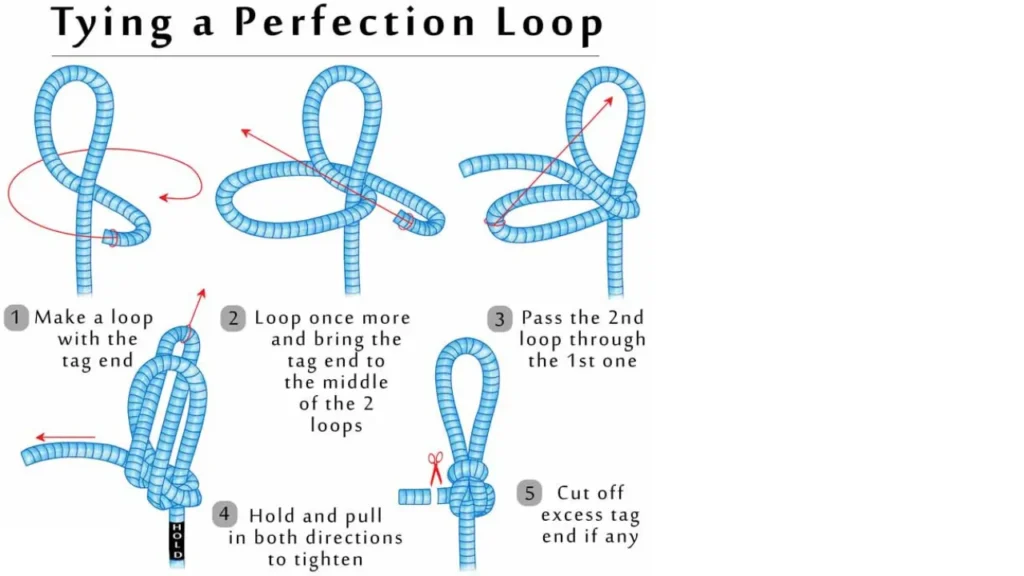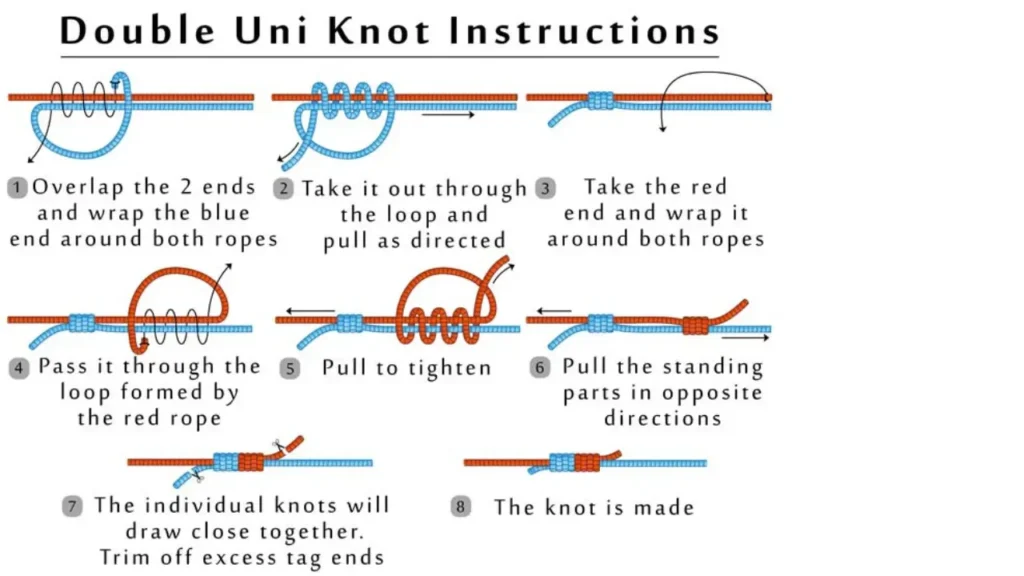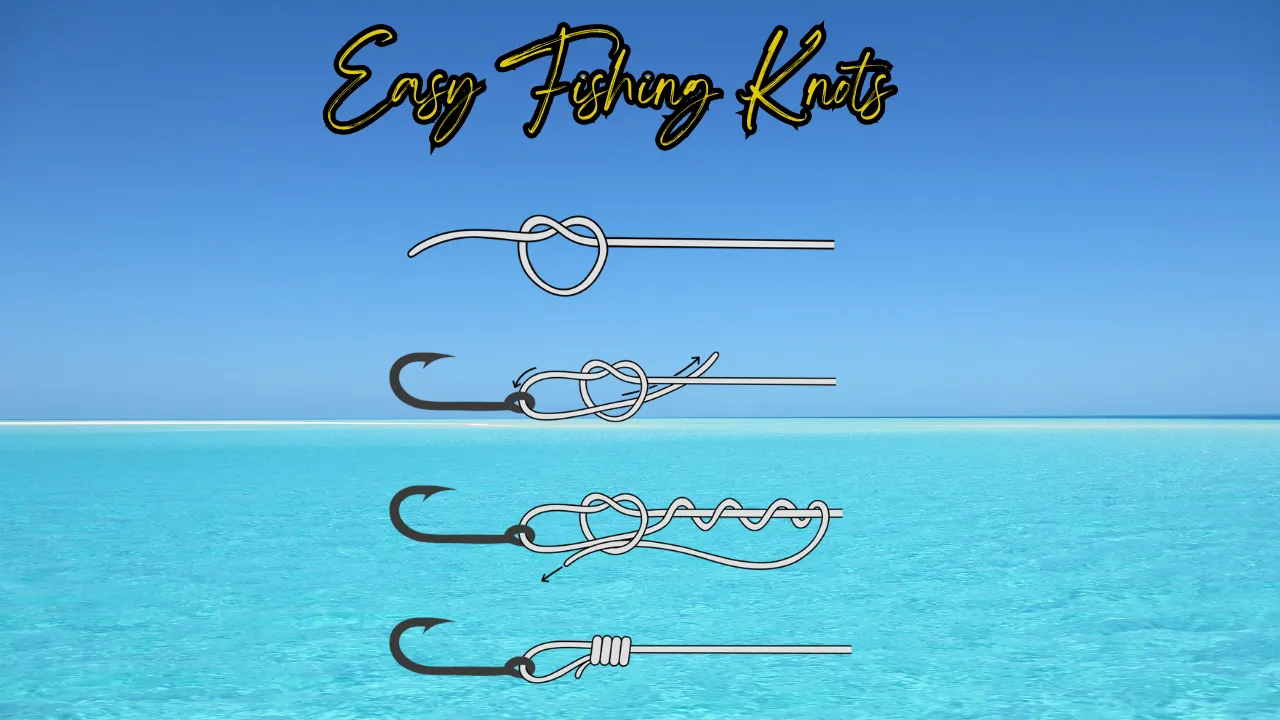Introduction
Fishing Knots Loop: Fishing is an age-old pastime that requires a combination of skill, patience, and knowledge. One essential aspect of successful fishing is the ability to tie strong and reliable knots. Among the various types of fishing knots, the fishing knots loop stands out as a versatile and widely used technique. In this comprehensive guide, we will explore the intricacies of fishing knots loop, explaining their significance, the various types available, and step-by-step instructions on tying them effectively.
Section 2: Understanding Fishing Knots
1.1 The Importance of Fishing Knots
Fishing knots are critical as they determine the strength and reliability of the connection between the fishing line and the terminal tackle. A well-tied knot ensures that the line doesn’t slip or break during a fight with a fish, increasing the angler’s chances of landing their prized catch.
1.2 Types of Fishing Knots
There are numerous fishing knots designed for specific purposes, such as connecting the line to hooks, swivels, and lures, or creating loops for various fishing techniques. Each knot has its unique characteristics and applications.
Section 2: Demystifying Fishing Knots Loop
2.1 The Basics of Fishing Knots Loop
The fishing knots loop, as the name suggests, involves creating a loop at the end of the fishing line. This loop can be utilized for attaching hooks, lures, or other terminal tackle, or even to create a loop-to-loop connection between two lines.
2.2 Benefits and Applications
The fishing knots loop offers several advantages, including easy and quick attachment of various terminal tackle, enhanced lure action, and the ability to change tackle without retying the entire line. These knots are commonly used in techniques such as fly fishing, drop shot fishing and leader-to-line connections.
2.3 Types of Fishing Knots Loop
In this section, we will explore some of the popular fishing knot loop techniques, including the Perfection Loop, Surgeon’s Loop, Double Uni-Knot, and Bimini Twist. Each knot has its unique characteristics, strength, and specific applications.
Section 3: Step-by-Step Guide to Tying Fishing Knots Loop
3.1 Perfection Loop
Detailed instructions accompanied by clear diagrams will guide readers through the process of tying the Perfection Loop, a versatile and reliable fishing knots loop technique.

3.2 Surgeon’s Loop
Readers will learn the step-by-step process of tying the Surgeon’s Loop, which is known for its simplicity and strength. Clear illustrations will aid in the understanding and execution of the knot.

3.3 Double Uni-Knot
The Double Uni-Knot is a popular choice for creating loop-to-loop connections. This section will provide a comprehensive tutorial, complete with images, on tying this knot effectively.

3.4 Bimini Twist
The Bimini Twist is a knot favored by anglers pursuing big game fish. This part of the article will delve into the intricacies of tying this complex knot, ensuring readers understand each step involved.

Section 4: Tips and Best Practices
To ensure success in tying fishing knot loops, it is essential to follow some tips and best practices. This section will cover key recommendations such as lubricating the knot, maintaining tension, and testing the knot’s strength before fishing. These insights will help readers tie strong and reliable fishing knot loops consistently.
Conclusion
Mastering fishing knots loop techniques is a crucial skill for any angler looking to enhance their fishing experience. The ability to tie strong and secure knots ensures that the terminal tackle remains connected, reducing the chances of lost fish.
By providing a comprehensive understanding of fishing knot loops, including various types and step-by-step instructions for tying them, this article equips anglers with the knowledge and confidence to tackle different fishing situations.
With practice and attention to detail, anglers can master fishing knots loop and enjoy more productive and enjoyable fishing trips.
Moreover, the versatility of fishing knots loop allows anglers to adapt to different fishing techniques and target a wide range of species. Whether you’re fly fishing for trout, drop shot fishing for bass, or offshore fishing for marlin, having a repertoire of well-tied fishing knot loops will give you an edge on the water.
Remember, practice makes perfect when it comes to tying fishing knots. It is recommended to practice tying knots in a controlled environment before heading out to the water. This way, you can ensure that you have a firm grasp of the techniques and can tie the knots confidently and efficiently.
Additionally, regularly inspecting and maintaining your fishing knots is essential for their reliability. Over time, fishing knots can weaken due to wear and tear, exposure to water, and repeated use. Therefore, it is crucial to periodically check your knots for any signs of damage or slippage and re-tie them if necessary.
Lastly, don’t be afraid to experiment and explore new fishing knot loop variations. While this article covers some of the most popular and widely used knots, there are countless other knots out there that may suit your specific fishing needs.
The more knowledge and proficiency you gain in tying fishing knots loop, the more adaptable and versatile you become as an angler.
In conclusion, mastering fishing knot loop techniques is a fundamental skill for any angler. By understanding the significance of fishing knots, learning about various types of fishing knot loops, and following the step-by-step instructions provided in this guide, you will be well-equipped to tie strong, secure, and reliable knots for your fishing endeavors.
So, grab your fishing line, practice those loops, and get ready to experience the satisfaction of successfully tying fishing knots loop and landing your dream catch. Happy fishing!

